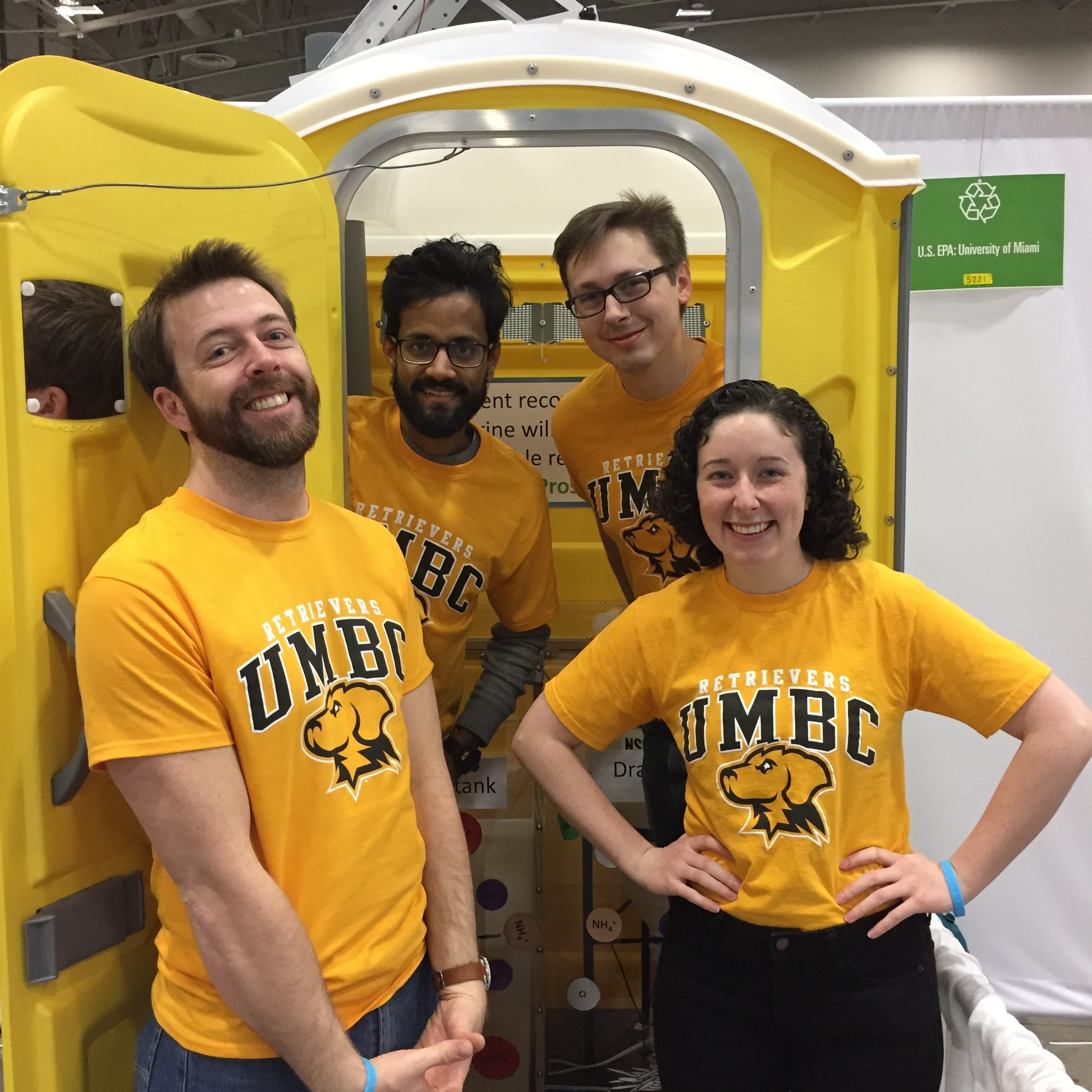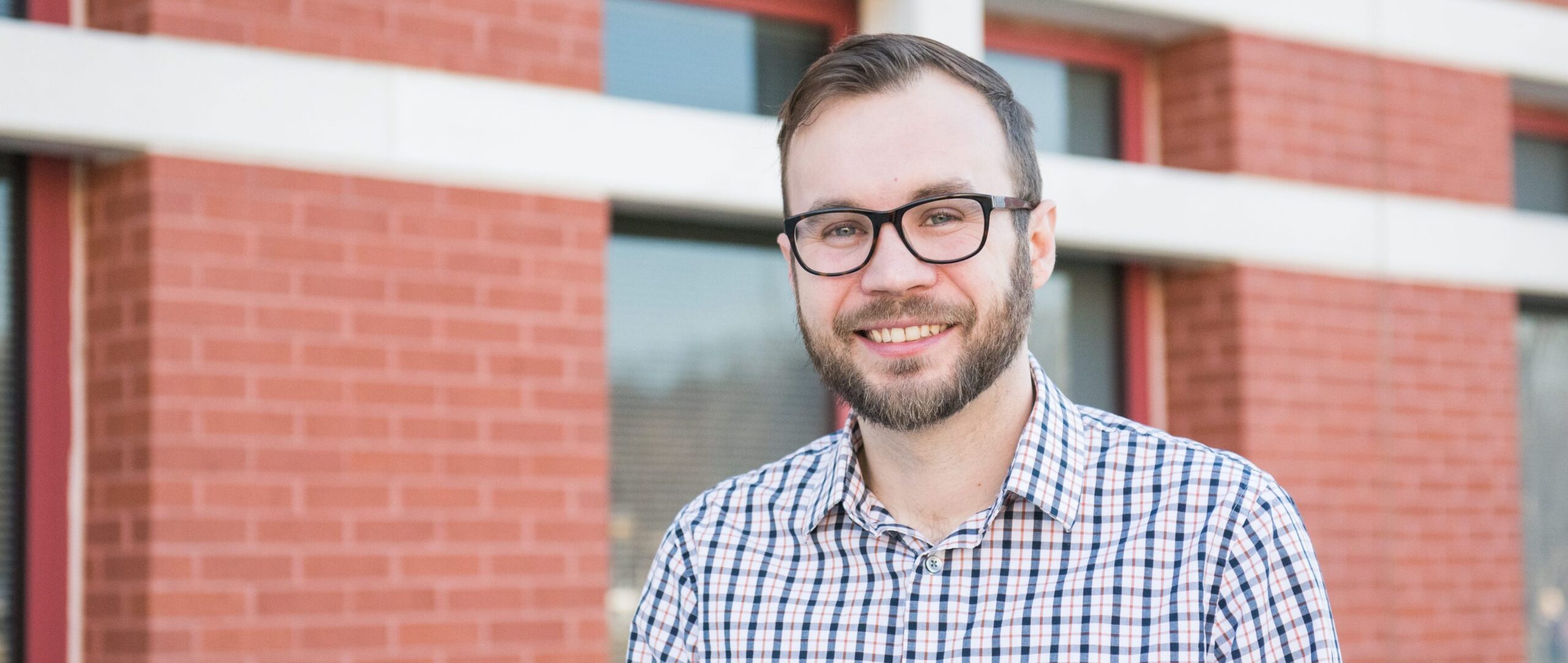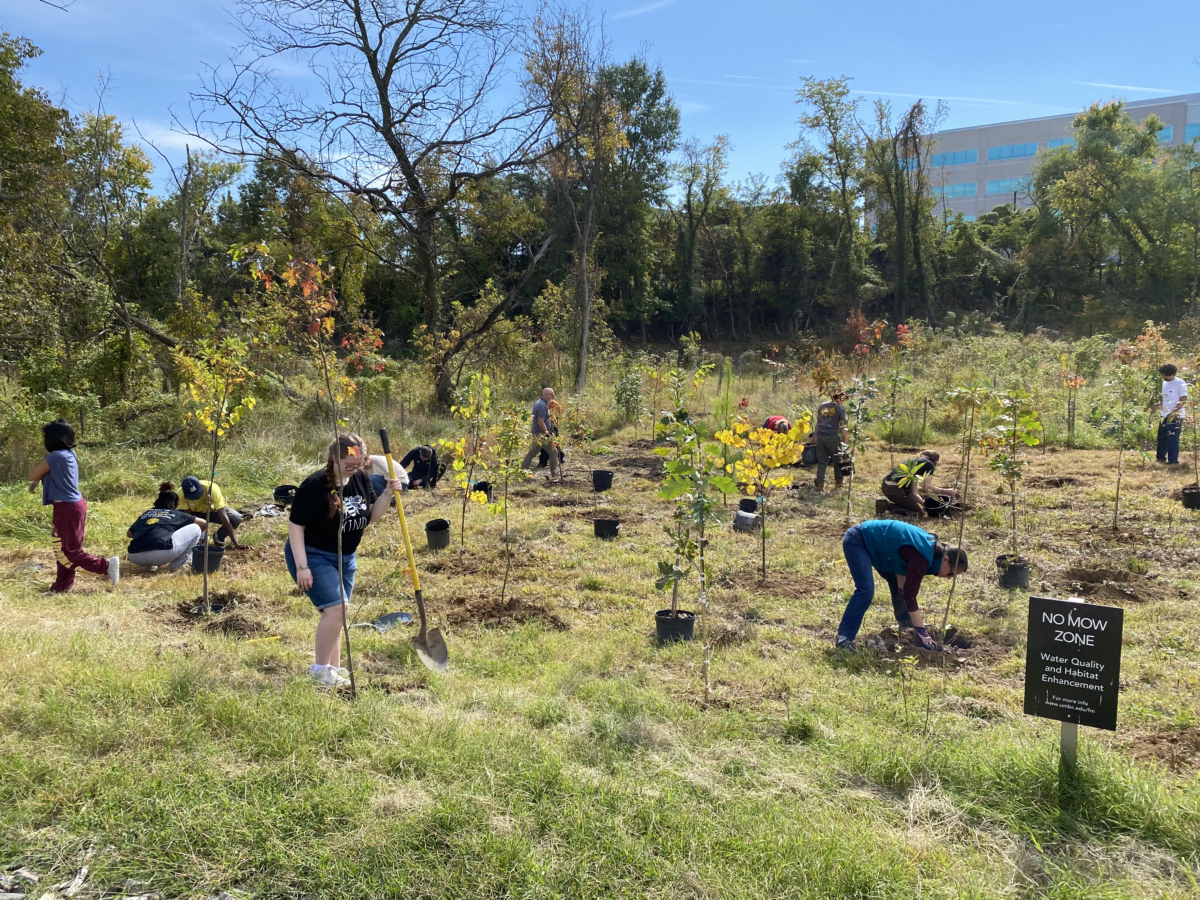UMBC’s Lee Blaney is known for his innovative research on water and soil contamination, working to keep people and the environment healthy. His latest project takes that focus in a new direction by developing an innovative system to recover nutrients from an unexpected source: human urine.
Blaney, associate professor of chemical, biochemical, and environmental engineering, received a phase one grant from the Environmental Protection Agency’s People, Prosperity, and the Planet (P3) program to investigate the ability of his Nutrient Extraction and Recovery Device (NERD) technology to recover nutrients from human urine.
This project will advance knowledge about how sustainable resource recovery technologies can be implemented. “Human urine accounts for the majority of nutrients in municipal wastewater, but only a small fraction of the flow,” explains Blaney. “When urine gets diluted into the wastewater system, it makes it more difficult to treat and recover these nutrients. So, we wanted to go to the source — toilets.”
Blaney worked with co-PI Marc Zupan, associate professor of mechanical engineering, and ten UMBC students to develop a system that can recover around 90% of the phosphorus, an ecologically important nutrient, and some of the nitrogen and potassium from collected urine samples. These nutrients can impair water quality by causing the formation of dead zones in places like the Chesapeake Bay and Gulf of Mexico, so developing a low-cost way of removing them from urine could have a major impact.
Once removed, those nutrients can then be used in ways that are beneficial rather than harmful to human and environmental health. “The recovered nutrients can be used as a fertilizer,” says Blaney. “By ‘recycling’ these nutrients, we also avoid the economical and energy costs associated with traditional fertilizers. It’s a win-win for the environment and our wallets.”
All P3 projects are required to include an educational component, to ensure researchers are sharing knowledge about the environment and sustainability. The student role in this particular project is significant.
Both undergraduate and graduate students have worked to develop and institute the NERD technology, which modified portable toilets to collect and process urine samples. In April, several students presented their work at the USA Science and Engineering Festival in Washington, D.C.

“I would say the biggest impact our work had at the USA Science and Engineering Festival was getting people to think differently about ‘waste’ by raising their awareness of nutrient recovery,” says Josh Benoit ‘18, chemical engineering. “Most people had never heard of the term ‘nutrient recovery’ and once they learned about it were excited about the potential of the Porta-NERDS system.”
Charles Portner ‘18, chemical engineering, who worked with Blaney and Benoit, says that presenting their work in Washington D.C. allowed the group to explain the simplicity of the technology and how it can be implemented easily. “Folks could potentially have fixtures operating on this technology installed in their private homes or schools without having to wait for municipal adoption,” Porter says, explaining that the system could decrease the burden on municipal treatment systems and empower “average folks who wanted to do their part.”
In the future, Utsav Shashvatt Ph.D ‘19, environmental engineering, hopes this work will impact communities globally. “I am excited about the potential of bringing these cost-effective portable nutrient recovery technologies to communities around the world.”
And, as Sophia Lopresti ’18, global studies, states “There are so many ways that human waste disposal affects our environment and our future health, yet urine continues to be a ‘taboo’ topic, but not to those who stopped at our table.”
NSF recently produced a video about research being done in Blaney’s lab. The full video can be viewed on the NSF website.
Banner image: Lee Blaney. Photo by Marlayna Demond ’11 for UMBC.




